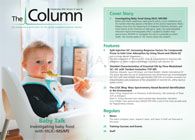Quantifying Water Content Using Headspace GC
Researchers from the University of Texas at Arlington (UTA) have developed a rapid, accurate, and precise method to quantify water content in solid pharmaceutical drugs using headspace gas chromatography (HSGC) (1).
Photo Credit: moodboard/Getty Images

Researchers from the University of Texas at Arlington (UTA) have developed a rapid, accurate, and precise method to quantify water content in solid pharmaceutical drugs using headspace gas chromatography (HSGC) (1).
The concentrations of water within pharmaceutical compounds can affect the physiochemical properties of a finished drug (1), resulting in a wide range of variations in the solid flow properties (1) or inconsistencies in the dosage (2). An increase in water can even allow harmful microorganisms to grow within the drug formulations causing adverse effects (3).
“Every therapeutic drug has a narrow range of optimal water content, which needs to be controlled to avoid potential adverse effects on patients,” said Daniel Armstrong, UTA’s Robert A. Welch Chair in Chemistry and leader of the project.
Currently, Karl Fischer titration (KFT) is the method recognized by the US Food and Drug Administration (FDA) for water determination in therapeutic drug formulations (4). However, this technique requires rigorous sample and condition control to obtain reliable results. For example, one case study found that if air with a relative humidity of 50% is introduced to the titration vessel, the measurement of water will increase by 1 mg (5).
This new method revolves around the use of ionic liquids (ILs), which are used for GC stationary phases but are also used as solvents in HSGC. The tunable nature of ILs for desired traits such as solubilizing power, thermal stability, viscosity, and hydrophobicity allows for a unique selectivity as a GC stationary phase (6,7). The resultant columns can have a high selectivity between common residual solvents and water (8) and can change anions to allow for the use of trifluoromethanesulfonate (TFO-) for better peak shape for water. They have high thermal stability, and lack volatility and degradation products, which eliminates solvent peaks and reduces the number of contaminant peaks (6,7).
When compared to alternative methods, including a recently developed near-infrared spectroscopy (NIRS) method, the new method was found to be significantly quicker, taking an average of 10 minutes to complete a measurement but also significantly more accurate than the KFT and NIRS methods, respectively.
“This is an example of where basic research on ionic liquids led to a very practical outcome with clear business implications for the pharmaceutical industry,” said Frederick MacDonnell, chair of UTA’s Department of Chemistry and Biochemistry.
“In addition to other advantages like speed and lower costs, our new system can also be automated, reducing labour costs for manufacturers with potential economic benefits for consumers,” said Armstrong.
Further benefits of the method include the small amount of sample required - approximately 10 mg. The researchers responsible hope the method can be used to reduce the price of pharmaceuticals by reducing costs in production. - L.B.
References
- L.A Frink and D.W. Armstrong, J. Pharma. Sci.105(8), 2288–2292 (2016).
- A.J Rogers, A. Hashemi, and M.G. Lerapetritou, Processses1, 67–127 (2013).
- A.H. Gerhardt, J. GXP Compliance13, 58–66 (2009).
- P. Lam and M. Nariman, Pharm. Technol. 33, 52–60 (2009).
- W.P. Bryan and P.B. Rao, Anal. Chima. Acta. 84, 149–155 (1976).
- X. Han and D.W. Armstrong, Acc. Chem. Res. 40, 1079–1086 (2007).
- Q.Zhao, H. Eichhorn, and W.R. Pitner, Anal. Bioanal. Chem. 395, 225–234 (2009).
- D.A. Jayawardhana et al., LCGC Europe24, 516–529 (2011).

Polysorbate Quantification and Degradation Analysis via LC and Charged Aerosol Detection
April 9th 2025Scientists from ThermoFisher Scientific published a review article in the Journal of Chromatography A that provided an overview of HPLC analysis using charged aerosol detection can help with polysorbate quantification.
Analyzing Vitamin K1 Levels in Vegetables Eaten by Warfarin Patients Using HPLC UV–vis
April 9th 2025Research conducted by the Universitas Padjadjaran (Sumedang, Indonesia) focused on the measurement of vitamin K1 in various vegetables (specifically lettuce, cabbage, napa cabbage, and spinach) that were ingested by patients using warfarin. High performance liquid chromatography (HPLC) equipped with an ultraviolet detector set at 245 nm was used as the analytical technique.
Removing Double-Stranded RNA Impurities Using Chromatography
April 8th 2025Researchers from Agency for Science, Technology and Research in Singapore recently published a review article exploring how chromatography can be used to remove double-stranded RNA impurities during mRNA therapeutics production.











